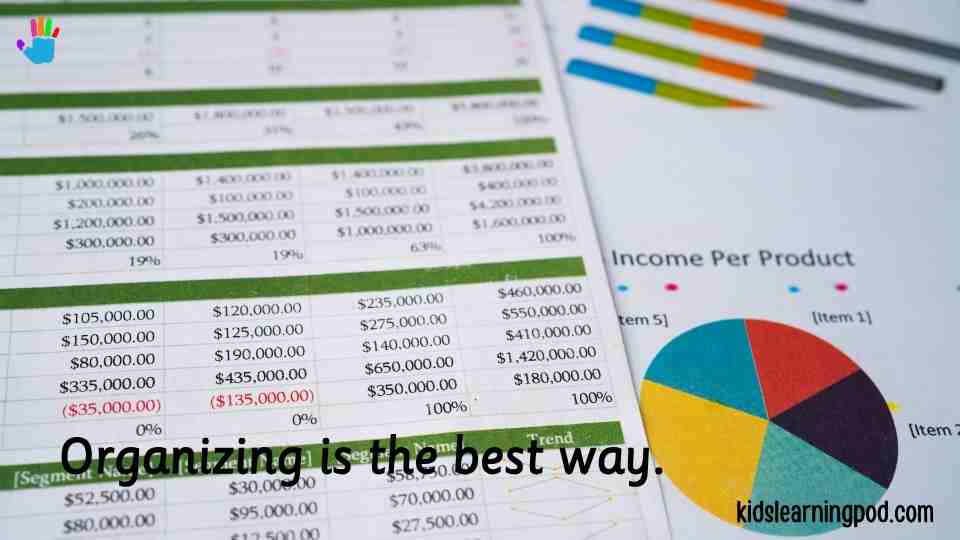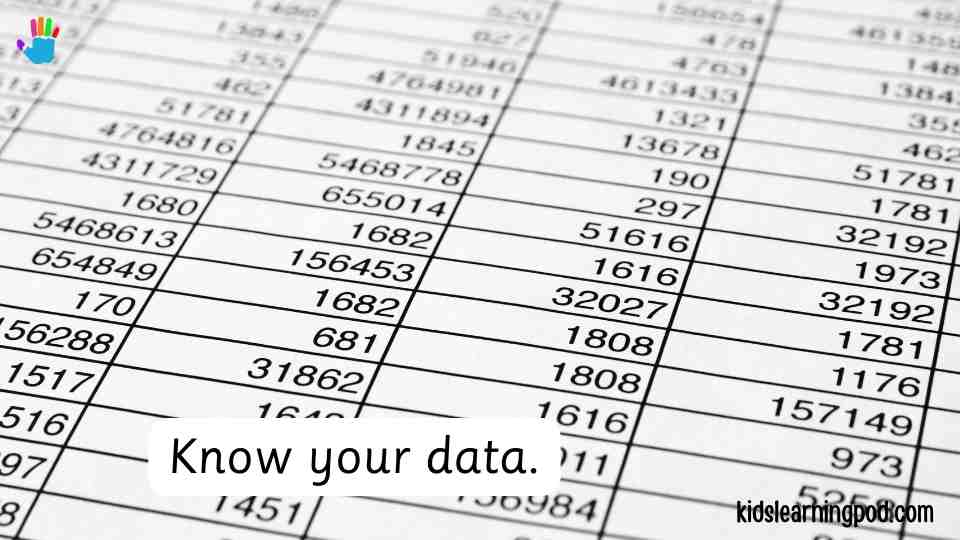Download 2 free excel templates
Tracking business income and expenses is fundamental to maintaining healthy financial practices and fostering growth. A Business Income Worksheet serves as an invaluable tool to simplify this process, offering clarity in financial documentation and aiding in efficient tax preparation. This article will guide you through creating and effectively using a business income and expense worksheet to help streamline your finances and facilitate future planning.
1. What is a Business Income Worksheet?
A Business Income Worksheet is a document or spreadsheet designed to track income sources and expenses for a business. Unlike traditional accounting ledgers, these worksheets are tailored for small to medium-sized businesses, providing a structured format to record income and categorize expenses. Utilizing a dedicated income worksheet can save time, enhance accuracy, and ensure organized records for tax season.
Businesses of all sizes benefit from this tool, as it consolidates vital financial data into one accessible place, making it easier to monitor financial performance and identify patterns in revenue and spending.
2. Key Benefits of Using a Business Income Worksheet
Using a Business Income Worksheet simplifies the record-keeping process, giving businesses a reliable means to:
- Simplify Record-Keeping: A worksheet keeps track of income and expenses in a structured format.
- Enhance Cash Flow Management: Track income against expenses to maintain a clear view of cash flow.
- Organize for Tax Preparation: Having well-organized records reduces stress and time spent during tax season.
- Identify Financial Trends: Spot areas of profitability or waste, allowing for informed business decisions.
3. How to Create a Business Income Worksheet: Step-by-Step Guide
Step 1: Choose the Right Format for Your Business Needs
When creating a Business Income Worksheet, select a format that aligns with your business structure and personal preferences. Popular options include Excel spreadsheets, Google Sheets, or dedicated accounting software like QuickBooks. Each has its advantages:
- Excel: Allows for customization but requires more manual updates.
- Google Sheets: Offers collaboration features and ease of access.
- QuickBooks: Automates expense tracking and integrates well with other financial data.
Step 2: Include Essential Columns and Headings
Organizing your worksheet begins with setting up relevant headings for income and expenses. Common columns to include are:
- Date: Record the date for each transaction.
- Description: Briefly describe the income source or expense.
- Category: Categorize each entry (e.g., Rent, Supplies, Sales).
- Amount: List the exact amount received or spent.
- Running Total: Automatically calculates cumulative totals for income and expenses.

4. Organizing Income and Expense Categories
To ensure efficient tracking, break down income and expenses into specific categories. Common income categories may include:
- Sales Revenue: Money received from products or services.
- Service Revenue: Earnings from consultations, services, or additional business-related activities.
- Other Income: Additional earnings such as interest, asset sales, or rental income.
Typical expense categories include:
- Rent and Utilities: Costs related to office or retail space.
- Office Supplies: Stationery, printing materials, and general office expenses.
- Marketing and Advertising: Expenditures for promotions, ads, and branding.
- Labor Costs: Payroll expenses, contractors, and freelancers.
Customize these categories to best reflect your business operations. Consistency in categorization will simplify financial analysis and tax preparation.
5. Tracking Monthly and Annual Totals
Maintaining monthly and annual totals helps monitor cash flow patterns and determine the financial health of your business. Use your worksheet to create a summary of monthly earnings and expenses. This will allow you to:
- Identify Patterns: Detect seasonal fluctuations or growth trends.
- Plan for Large Expenses: Understand cash flow during peak and off-peak periods.
Tracking year-to-date totals is equally important, especially for businesses experiencing rapid growth or shifts in revenue. A year-to-date column offers insight into overall financial performance at any point during the year.
6. Tips for Keeping Your Business Income Worksheet Updated
Updating your income and expense worksheet regularly is crucial to maintaining accurate records. Here are some tips:
- Set a Routine: Allocate time each week or month to update your worksheet, ensuring accuracy in tracking.
- Use Accounting Software: Integrate tools like Wave or QuickBooks to automate data entry and streamline updates.
- Utilize Digital Receipts: Many expense tracking apps allow you to capture and store digital receipts, simplifying data entry and categorization.
Automating and digitizing your record-keeping can save time, reduce errors, and make it easier to keep track of all business-related financial activities.
7. Analyzing Your Business Income and Expense Worksheet for Financial Insights
Once you have a comprehensive worksheet, analyzing the data can provide valuable insights. Use it to:
- Identify Profitable Months: Compare monthly revenue to pinpoint periods of high profitability.
- Calculate Average Income: Determine the average monthly income to aid in financial planning.
- Spot High Expense Categories: Review which categories have the highest expenses to identify opportunities for cost-cutting.
By regularly evaluating the information in your worksheet, you can make strategic decisions that drive financial stability and business growth.
8. Using a Business Income Worksheet for Tax Season Preparation
One of the biggest advantages of a Business Income Worksheet is its usefulness during tax season. A well-maintained worksheet can streamline tax filing by providing a clear record of income and expenses. Here are some ways it helps:
- Organizes Financial Records: Easily accessible data minimizes errors and saves time.
- Simplifies Tax Audits: Comprehensive records serve as an excellent resource if your business is audited.
- Integration with Tax Software: Most worksheets can be easily imported to tax software, reducing manual data entry and improving accuracy.
9. Mistakes to Avoid in Business Income Expense Tracking
While creating a worksheet is straightforward, common mistakes can hinder its effectiveness. Avoid these errors:
- Improper Categorization: Be consistent in categorizing each transaction to avoid confusion during analysis.
- Irregular Updates: Missing updates or delaying entries can lead to inaccuracies that may affect tax filings and financial planning.
- Manual Data Errors: If using a spreadsheet, be cautious with manual entry to prevent calculation mistakes.
Using accounting software can minimize errors, but it’s also essential to periodically review your entries for accuracy.
10. Choosing the Right Template for Your Business
Finding the ideal business income and expense worksheet template can make all the difference. Templates are available for free or as paid options, and your choice depends on your business needs. Here’s an overview:
- Free Templates: Options like Google Sheets templates and Excel spreadsheet downloads are widely accessible online.
- Paid Templates: Advanced templates, often included with accounting software, may provide additional customization and automation features.
For high-quality template options, consider tools like QuickBooks or Wave. Paid options often include advanced tracking and reporting functions beneficial for larger businesses.

11. Examples of Business Income and Expense Worksheet Templates
There are various templates available to suit different types of businesses. Here are a few examples:
- Basic Templates: Suitable for small businesses, freelancers, and startups.
- Industry-Specific Templates: Custom templates designed for specific industries, like retail or consulting.
- Customizable Templates: For businesses needing specialized income and expense categories.
For templates tailored to your business, check resources like Template.net or Smartsheet.
12. Free and Paid Tools for Business Income Tracking
Tracking business income can be simplified with specialized software. Here are a few recommendations:
- QuickBooks: Comprehensive features for income and expense tracking, suited for medium to large businesses.
- Wave: Free accounting software for small businesses and freelancers.
- FreshBooks: Paid software with customizable reporting options.
For a detailed comparison of accounting software, visit Fundera’s guide to accounting software.
13. Best Practices for Managing Business Income and Expenses Long-Term
Effective long-term management of business finances requires discipline and consistency. Here are best practices to adopt:
- Regular Updates: Set a consistent schedule to enter income and expenses.
- Integrate with Financial Tools: Sync your worksheet with other financial software for seamless tracking.
- Review and Reflect: Monthly or quarterly reviews can help you stay aligned with financial goals.
These practices ensure you’re always prepared for tax season, audits, or any financial reporting needs that arise.
Frequently Asked Questions about Business Income Worksheets
How to decide between a manual worksheet and software?
Deciding between a manual worksheet and software for managing your income and expenses depends on several factors, including your personal preferences, level of comfort with technology, and the complexity of your financial situation. Manual worksheets, often in the form of spreadsheets, allow for a tactile approach to budgeting. They offer flexibility in layout and calculations, enabling you to customize categories and formulas according to your needs. If you prefer a hands-on method and want to avoid the learning curve associated with new software, a manual approach may be suitable. This method can also foster a deeper understanding of your financial habits as you actively input and analyze your data.
On the other hand, software solutions provide advanced features that can streamline the budgeting process. These tools often come equipped with automation capabilities, such as syncing bank accounts, tracking transactions in real-time, and generating detailed reports. If your financial situation is complex—such as managing multiple income streams or various investments—software may save you time and reduce the risk of errors associated with manual entry. Additionally, many budgeting software options offer user-friendly interfaces and customer support, making them accessible even for those less comfortable with technology. Ultimately, consider your financial needs, the importance of convenience versus control, and whether you prefer a structured approach or the freedom to tailor your budget to your specific circumstances.
What are the essential categories in an income and expense worksheet?
When creating an income and expense worksheet, it’s crucial to categorize your financial entries effectively to gain a clear overview of your financial situation. The essential categories typically include income, fixed expenses, variable expenses, and savings. Under the income category, you should list all sources of income, such as salaries, bonuses, rental income, and any freelance earnings. Fixed expenses encompass regular, unchanging costs like rent or mortgage payments, insurance, and subscriptions, while variable expenses include discretionary spending that can fluctuate month to month, such as groceries, dining out, and entertainment.
Additionally, incorporating a savings category is vital for tracking funds set aside for future goals, emergencies, or investments. This might include contributions to savings accounts, retirement funds, or any other financial goals. By organizing your income and expenses into these essential categories, you can identify spending patterns, monitor your financial health, and make informed decisions about budgeting and saving. This structured approach ultimately facilitates better financial planning and can help you achieve your short- and long-term financial objectives.
How can small businesses benefit from income tracking?
Income tracking is essential for small businesses, as it provides a clear view of financial health and enables better cash flow management. By consistently recording income, small business owners can identify profitable periods and pinpoint fluctuations in revenue, which is critical for forecasting and budgeting. Income tracking also allows for more accurate financial records, reducing the chance of errors during tax preparation and ensuring that every revenue source is accounted for. This transparency is especially beneficial for small businesses with limited resources, as it supports strategic planning, helps secure funding, and strengthens financial stability.
Beyond tax season, income tracking aids small businesses in making informed financial decisions that can drive growth. With organized records of income sources, business owners can analyze which products or services are generating the most revenue and focus their efforts on those areas. Additionally, income tracking can help detect financial trends, such as seasonal spikes or dips, that may impact future cash flow. These insights allow businesses to anticipate challenges, set realistic financial goals, and make proactive adjustments, ultimately fostering sustainable growth and building a solid foundation for long-term success.
Download Worksheets
Kindly Allow Pop ups to let the Download Begin!

Conclusion
A Business Income Worksheet is more than a financial record; it’s a tool for enhancing cash flow visibility, preparing for taxes, and ensuring business stability. By following the steps above and implementing best practices, you’ll be equipped to make strategic financial decisions that drive growth and profitability. Start creating your business income worksheet today and experience the transformative impact of organized financial tracking.
FAQs
What should be included in a Business Income Worksheet?
A comprehensive Business Income Worksheet should include columns for Date, Transaction Description, Category (such as income or expense type), Amount, and a Running Total. Additionally, include categories for specific income types (like sales or services) and expense categories (such as rent, utilities, or marketing) to make the worksheet more organized and useful for analyzing cash flow.
How often should I update my income and expense worksheet?
For accuracy, update your income and expense worksheet at least once a week. Regular updates help maintain accurate records and ensure nothing is overlooked. Businesses with high transaction volumes may benefit from daily updates, while smaller operations might manage with bi-weekly or monthly updates. Consistent updates save time during tax preparation and offer real-time insights into financial health.
Can I use a Business Income Worksheet for personal finances?
Yes, a Business Income Worksheet can also be adapted for personal finance tracking, although it’s primarily designed for business use. For personal finances, you might modify the categories to include income sources like salary, interest, and dividends, and expenses like rent, groceries, and utilities. It can be a powerful tool for individuals looking to track personal cash flow and manage budgets effectively.
What’s the best software for business income tracking?
Several software options are popular for business income tracking, including QuickBooks and Wave. QuickBooks offers advanced features like invoice tracking, expense categorization, and integration with other financial tools, making it ideal for larger or growing businesses. Wave is a good choice for smaller businesses or freelancers, as it provides many essential features at no cost.
Are there free templates for income and expense worksheets?
Yes, there are many free income and expense worksheet templates available online. Google Sheets and Excel offer basic templates that can be customized to meet specific business needs. Additionally, websites like Template.net and Smartsheet provide downloadable templates designed for various industries and business sizes.





